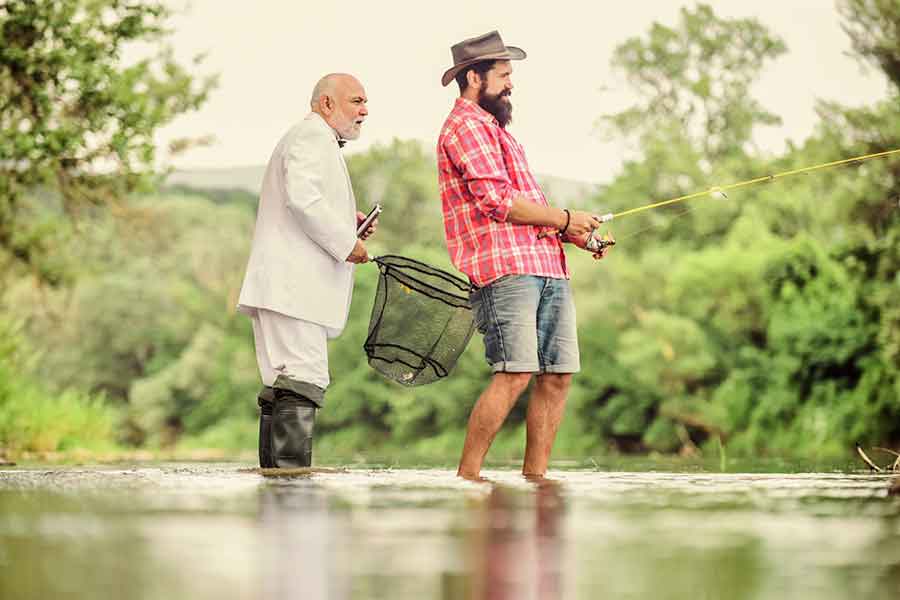Frigid water swirls around my wader-clad thighs as I tentatively step from one slick rock to the next. Carefully dropping an elk hair caddis into the swift current I almost lose my balance as a fat, 12-inch native rainbow slashes the fly.
A quicksilver ribbon of life, the pristine Wild and Scenic Rapid River near my home is a classic pool-and-drop river. It is the only river to achieve such protection specifically because of its water quality. It is also a fertile nursery for rainbow trout, a sanctuary for a small run of endangered wild Chinook salmon, and a stronghold for endangered bull trout.
The river snakes along the bottom of a deep, narrow canyon. The cold water is sheltered by thick brush, overhanging ancient Ponderosa pines, fir, and tamarack trees. This roadless watershed provides the shade necessary to keep the water just above freezing even when summer temperatures soar into the triple digits. And because it is a long hike with abundant resident rattlesnakes to reach the upper stretches, it doesn’t get a lot of fishing pressure.
After a few minutes of Zen-like casting, I am distracted by a water ouzel-a teeter-ass bird-my father-in-law called them. With frequent dips into the water for insects interspersed with its comical bobbing, I chuckle and marvel at Nature’s range of behaviors. But my entertainment comes at a price: it causes me to miss the first strike. I mend my line then flick another short roll cast under streamside foliage in hopes of luring another jeweled morsel. As the fly lands, I begin stripping the line to keep up with the turbulent current. Another lightning strike finally fires muscle memory. I set the hook and my rod bows. The pool is small and the fight is quickly over as I flick the glistening fish onto the gravel bar I’m standing on. Slipping two fingers in the gills, I snap the backbone and end the struggle. After gutting and cleaning the fish, I tuck it in the pouch of the tattered fishing vest that belonged to my father. It joins the other fat fifteen-inch-long rainbow caught upstream thirty minutes before.
Rinsing my hands in the cold, clear water, I whistle for Annie, my Labrador retriever, and head back to camp: I’m done fishing for today. Like the other animals that inhabit this pristine water, I fish for food. Everything eats something, including me. Only if the fish is too small to eat do I let it go. I understand the biological necessity of crowded streams, but the idea of catching and then releasing fish for my own satisfaction unsettles me. As far as I know, it produces pleasure on only one end of the line.
Many people practice catch-and-release fishing and they are deeply committed conservationist anglers. And while some think catch-and-release is the moral high road, it is not without cost. Studies show a percentage of fish released die from exhaustion or shock. The same studies show mortality rates climb in direct proportion to the length of time a fish is held out of the water. Anything that delays the quick and safe return of the fish to water, be it the extra time it takes to remove a barbed hook, over-handling of the fish (which removes the protective slime) or simply taking the time for a photo, all increase the odds of the fish dying.
A two-year study of the effects of catch and release on rainbow trout in Alaska’s Alagnak River found that fish caught-and- released experience physiological changes noted by an increase in chemicals related to stress: cortisol, glucose, and lactate. These chemical changes have been observed to produce a change in reproductive behavior, resistance to disease, and growth suppression. In addition, of the 1900 fish captured, 30% showed scars from previously being hooked. The most common injuries were torn, inverted, or missing maxillary and missing eyes.
Of course, many would say when a fish is killed purposefully, it is the ultimate cruelty. But I see it differently. Fishing has always been a food-gathering exercise for me. My family eats fish, deer, and elk almost exclusively. We work hard to gather our wild food. Killing wild animals for food and participating in the life-and-death cycle of life is a conscious choice we’ve made. We can not, nor do we choose to, sidestep the fact that our hunting and fishing will end another creature’s life.
Yet, despite my personal feelings and scientific data, I also believe there are valid biological reasons for catch-and-release angling. Many native fish populations simply would not withstand heavy fishing pressure if all anglers killed the fish they caught.
And there is another pragmatic reason for catch-and-release fishing. Getting folks “out there” on the rivers, streams, and lakes is critical. It’s hard to love and protect something without personal experience. In today’s world, there is a very tangible disconnect between people and the natural world. Catch-and-release fishing gets people off the couch and onto the streams and connects them with the land, water, plants, and wildlife. Without that connection the natural world would eventually morph into an agrarian semblance devoid of wildness, mystery, and in my opinion, beauty.
Unfortunately, the underlying reason why catch-and-release fishing is necessary—human density—is often ignored. Whether it is a stream polluted by factories, a habitat bulldozed for housing, a river dammed for energy, or a simple over-harvest the story is the same—too many people squeezing too much from too little.
My husband and I have made a conscious decision to live on the edge of wild land, near millions of acres of public land and intact ecosystems where life and death are an integral part of the natural system. However, this meat gathering comes with a price. It means I kill creatures I appreciate and respect.
And I never take that for granted. ISI










